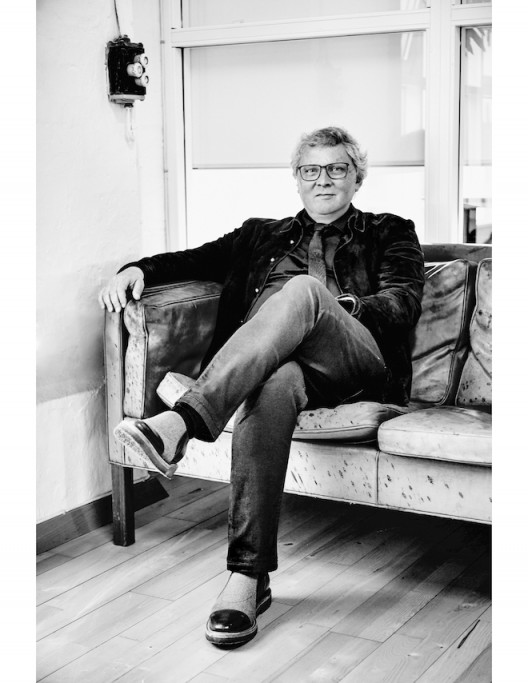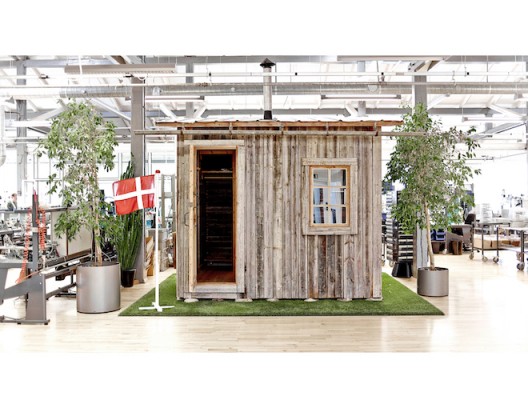by Chris Moore
Renowned for producing exceptional eyewear, LINDBERG has commissioned a short film by Margaret Zhang, film director, model and social media phenomenon. The film will be launched this year.
Ran Dian spoke with Henrik Lindberg, CEO, architect and part of the LINDBERG design team. The Danish firm was founded in 1969 by Henrik’s father, Poul-Jørn Lindberg, who created the revolutionary titanium wire design for eyewear together with architect Hans Dissing.
How did the film project with Margaret Zhang develop?
“Photography is hugely important for LINDBERG’s communication but with this film we wanted to put the energy and movement of film and social media into our brand, as a supplement to using still photography. Films engage end-users more than stills. That’s why we see more and more films on social media and it gets a brand closer to its followers.
Margaret is an artistic creative director and also has a strong social media presence. With her short film she brings a different perspective to our brand. It is a totally new way of reaching our end-users and there is the ‘wow!’ effect that this kind of creative film comes from LINDBERG.”
Do you collect art and design yourself? I hear you also collect cars?
“Yes, I collect, for instance furniture. It does not have to be just classic Danish designs.
I mention this reminds me of the scene in The Blues Brothers at the Country & Western bar,
Elwood: What kind of music do you usually have here?
Claire: Oh, we got both kinds. We got country and western!
Henrik laughs at this suggestion.
Well, I do keep an eye on and collect from more global designers. I find that especially a few Swedish furniture designers fit our style very! Two, who inspire me and from whom I have unique furniture, are Mats Theselius and Jonas Bohlin. Mats makes functional furniture made of unique materials in a clear-cut and minimalistic design. Besides having his designs at home, he also designed the wooden cabin placed in our openplan HQ office in Aarhus. Jonas Bohlin is another interesting Swedish furniture artist/designer. Jonas has expanded my horizons as to form, function and treatment of unique and delicate materials.
I also design interiors myself. The most important thing for my family is that the design fits our style and that it is timeless. We like to spend time finding the right things for our home, so we do not just choose designs because they are fashionable right now.
I also collect cars and I keep an eye on many different car brands. The essential part for me, is that the car is unique with all its original parts. Like for our furniture, the timeless design of the car is crucial. I collect both older cars, from late ‘60s, and new cars. I find great pleasure in restoring by the book. It might take two years to get all the authentic parts – but I am a patient man.
To share this passion with the company and my employees, some of the things I collect – boats, motorcycles, and racing cars – are exhibited in different locations at the LINDBERG HQ. I do this to give our employees inspiring experiences when they are at the office.

How does collecting help your work as a designer?
Whether it is frames, furniture, fashion, buildings or anything else, I have a general interest in design. It inspires me. Not only for the development of new frames, but also on a more conceptual level – including our eyewear cases, our visual materials, and so on. Everywhere I go, I find inspiration. LINDBERG always needs to be ahead of time. We need to know what happens in the industry. We need to find the right balance between maintaining our style and developing design.
I love to design frames, but also the company as a whole. To see what opportunities the dynamic world has to offer us and how we can utilize opportunities using new technologies, meeting new market demands, using media in new ways. And often do it in another way than other companies and competitors. That is a strong part of our company DNA – to do things differently. The LINDBERG way. We need to be alert!
How did LINDBERG’s design principles develop? And how have they evolved?
The LINDBERG design principles today are very much the same as when LINDBERG started.
The key principles are fashion and function. The materials are very carefully selected, never compromising on the comfort of the frames. They are super light-weight, flexible, multi-adjustable. They fit each face and feel comfortable to wear throughout the entire day. It’s when craftmanship and beautiful engineering meet. We constantly challenge our engineers and designers to make the impossible happen. Our frames are non-allergic and all screw-less. As for design, we have a broad spectrum, from more classic models to more modern and playful, bold models.
From a designer’s perspective, what makes LINDBERG eyewear unique?
All of the above – fashion and function: screw-less hinges, quality beyond every other standard in the industry, craftmanship, the art of customization, unique design, comfortable to wear. You really have to try it to really feel the enormous difference from other brands.

As a designer, what sort of design faults really bother you? And what do you suggest to prevent them?
It bothers me when we spend a lot of time and energy developing state of the art frames and the markets do not understand how to sell the right frame to the end-user or are not capable of finishing the pair of glasses for the specific end-user in the right way. If the individual wearer ends up with a frame that just does not fit his or her lifestyle or is not mounted correctly with the lenses, they end up with a bad impression of a LINDBERG frame.
As a collector yourself, of design and art, what are your favorite cities to visit? is there anything that links them, or are they all very different?
We sell LINDBERG frames all over the worId. It’s important for me to visit our markets and sense new trends in the eyewear fashion industry. I find much inspiration when I travel. New York, Milan, Paris, London, Shanghai, Tokyo. I travel to the exhibitions where LINDBERG attends, for instance MIDO in Milan or Silmo in Paris. When I am there, I also attend fashion weeks to explore fashion trends and tendencies and shop for our photo shots. I aim at going to Rome and London regularly. I enjoy going to design weeks around the world. Especially the one in London and the exciting Bauhaus exhibition in Berlin. Travelling is not my only source for inspiration though, I find a lot of inspiration online as well
Finally, what exhibitions are you looking forward to? (next week is the Geneva Car Show).
I am actually leaving for the Geneva Car show today. In February, there is a Retromobile show in Paris. When I go to shows and exhibitions, I meet exciting people, see fantastic things, shop for our photo shots and just return with a lot of useful inspiration.